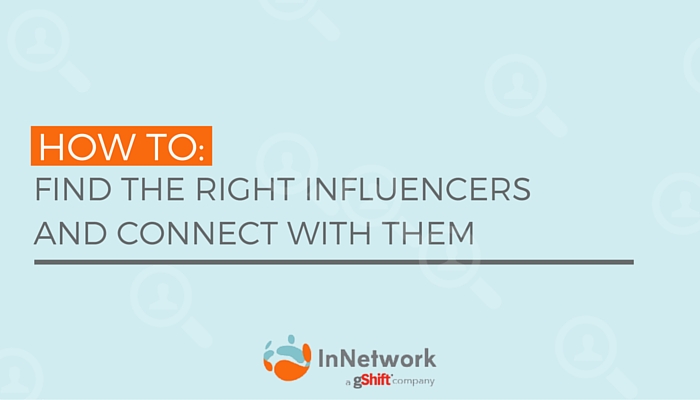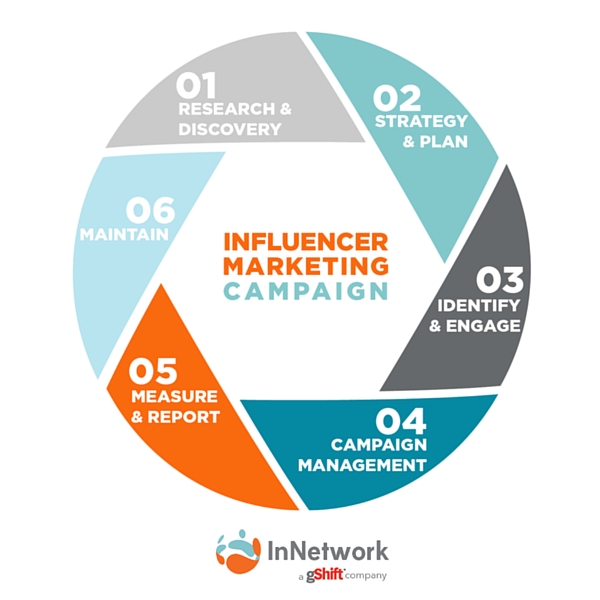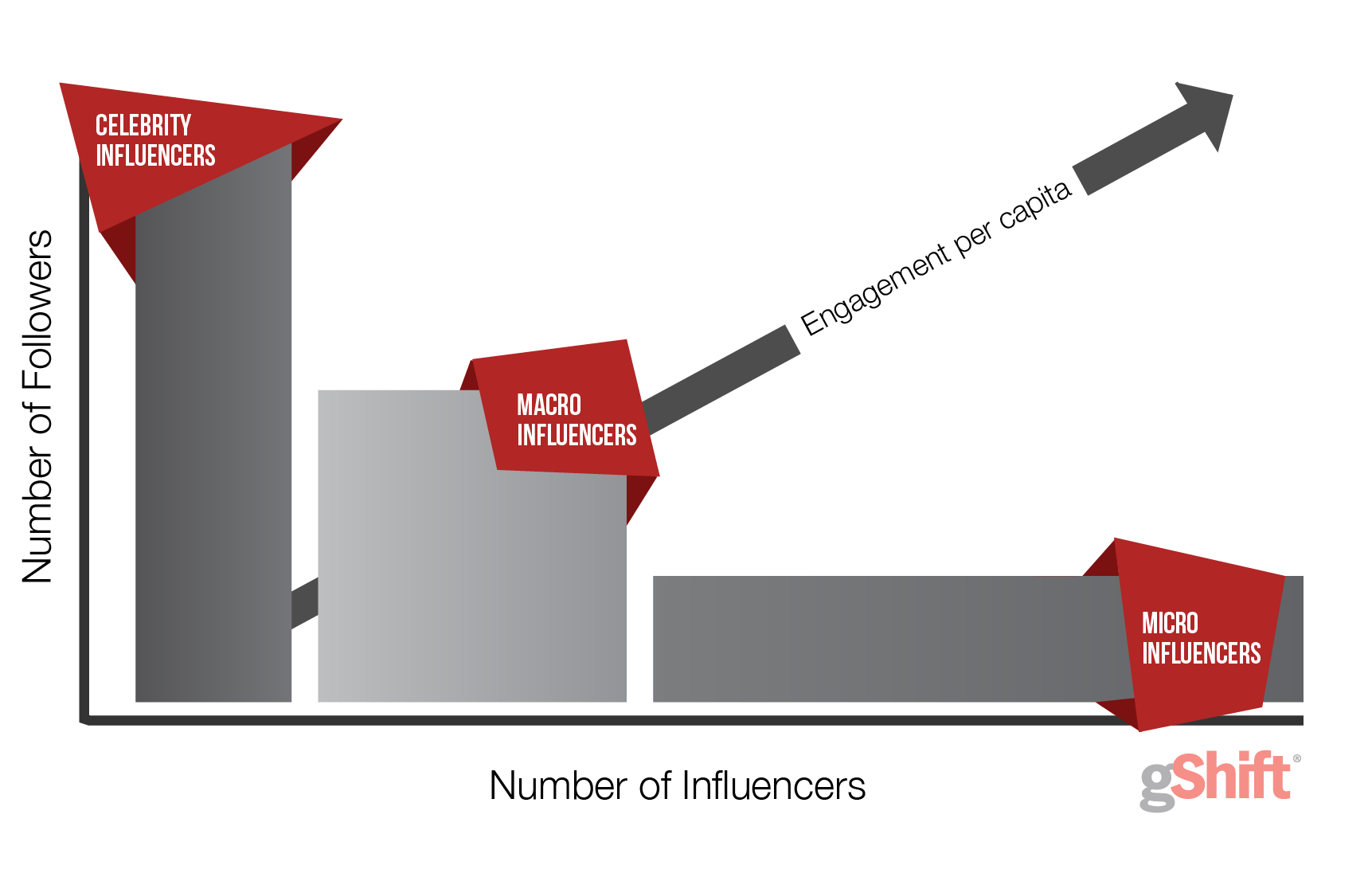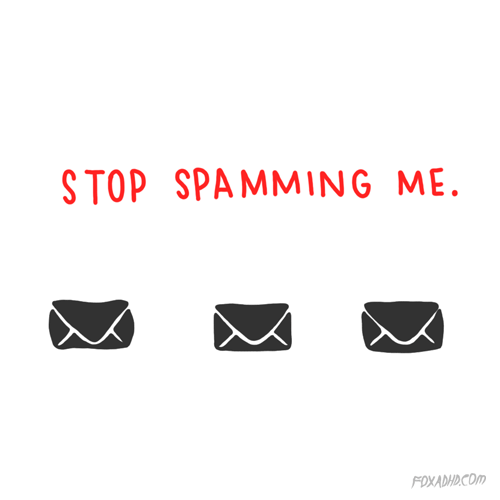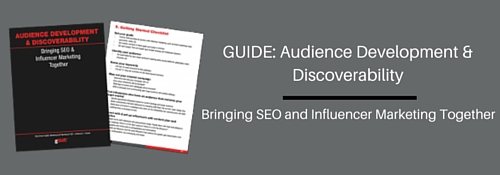We stressed the importance of properly setting up a campaign for success in our latest blog post – but what’s next in the influencer marketing cycle?
Identifying and engaging influencers.
Might seem like an easy task but finding the right influencers might be like trying to find a needle in a haystack. How do you really know who the best influencer is for your brand? And what does your perfect pitch look like in scoring these influencers?
Let’s take a look…
1. Identify
Audience-centric approach
Since your ultimate goal is to convert your visitors into paying customers, it’s only logical to build your marketing strategy around them. This means you should literally focus all of your efforts into getting to know your audience first and anticipate how they might react. – Jeff Bullas
The beauty of influencer marketing is that you have the opportunity to reach exactly who you are trying to target – you don’t have to worry about wasted marketing dollars if you choose the right influencers with the right audiences. As we discussed in our first post of the series, you need to understand your audience before picking your influencers. And this goes beyond their demographics.
Each person has his or her own lifestyle and personality that demographics don’t portray. Taking an audience-centric approach to influencer marketing requires you to get a grasp on what your audience is interested in. Using social listening or audience intelligent platforms that will help you understand your target audience’s interests.
A common misconception is that a brand needs influencers who represent the category that the brand is in. Say you are a marketer for a video gaming console and looking to run an influencer marketing campaign. Your initial thought might be to reach out to fellow video game influencers on YouTube. This could work, but you have other options that you should explore. If you do some research, you might discover that your target audience may also interested in hockey and indie music. This is key insight to keep in mind when searching for influencers as you explore the leaders in these categories. It also helps shape together a content strategy that resonates with your audience.
Working from the audience to your influencer will increase the effectiveness of your influencer campaign as it allows you to target your marketing efforts to those who are genuinely interested in hearing about your brand and content. It is key to finding the right influencers for your influencer marketing campaign.
Setting parameters
Once you are ready to start the influencer search, set several parameters on what you want in an influencer based on your campaign strategy. These could include:
Social Platforms and Channels
Now that you know your audience’s interests, you need to look for influencers who can reach them based on where they are online. Is your audience primary on Instagram? Facebook? Reading blogs?
Geography
Do you ship across the US, but not in California? You want to make sure that the influencers you work with don’t have a large following in that state so your marketing dollars are being allocated efficiently.
Reach
While it is far from the most important parameter, it still needs to be considered. An influencer with more followers might improve your brand awareness but will their content drive consumers to take an action? The reach of an influencer will also be dependent on your budget like we discussed in the last series. What are the minimum and maximum amount of followers an influencer should have in order to reach your objectives and respect your budget? Keep in mind, there is a sweet spot when searching for influencers as it relates to the size of their audience. We’ve found most success comes from finding micro influencers – they have smaller communities but they are highly engaged, as shown in the graph below.
Type of Content
Reflect on your content strategy you created. Do you need somebody to create videos of them doing a house DIY? Certain influencers are known for creating different types of content. If you need a video creator, look at YouTube influencers. Or maybe Snapchat for quick views inside the life of an influencer.
Engagement
Depending on your objective, look for influencers that show high levels of engagement with their audience. Is their audience responding to their CTA? Are they getting retweets, comments, and shares?
Branded Content
You want to find influencers who show they are open to working with brands – seems like a no-brainer right? But this will give you a better idea of what type of brands they generally partner with and help you grasp whether or not your brand aligns with their content. You want to partner with an influencer who is authentic and true to their personal brand – are they partnering with every brand that comes their way or just the ones that resonate with their audience and they fully support?
Identifying influencers is a job in itself. 73% of fashion and beauty marketers claim that identifying the right influencer is the biggest challenge when it comes to influencer marketing.
And being able to find the information I’ve outlined isn’t easy without having access to a few tools (i.e. audience data and engagement numbers). Using an influencer marketing platform like InNetwork will save you time by providing your brand with accurate information on influencers and their audiences.
2. Engage
Whether you’re a big fish or small fish, reaching out to influencers should be approached similarly, and more importantly, humbly. Don’t assume that because you’re a small brand that influencers won’t want to work with you, just like you shouldn’t assume that influencers will want to work with you just because you’re a well-established brand. Each can offer different values and both sides have their challenges when locking in their influencers.
But the only way to secure influencers is by preparing an irresistible pitch that they can’t help but say yes to.
Blogging has become a part- or full-time gig for many influencers and with everything going on in their lives, it’s easy for them, like it is for the rest of us, to overlook an email. To start reading and forget to reply.
So if you’re wondering why you didn’t get a response from the influencer you reached out to, it might not be because they’re not interested. It could just be because they’re busy.
You can’t change how busy they are, but you can adjust your messaging and present yourself in a way that allows you to cut through the noise. Now, where to start?
Follow their content
You’ve already coined them as an ideal influencer but it doesn’t hurt to do more research to make sure your brand aligns with the content they provide to their audience. And this goes beyond their last 5 tweets. They’ve worked hard to grow their audience by being authentic, they don’t want to hear from somebody who hasn’t taken the time to understand what makes their audience tick.
It also gives you something to talk about with them and shows that you have a genuine interest in what they’re all about.
When doing your research, look for a PR friendly or contact page to make sure you reach out to the influencer in the way they prefer. It could be an email, contact form, or Twitter DM. But going that extra mile and making sure you are reaching out on their terms can make a world of a difference.
Nurture a relationship
If you remember anything from this post, remember this. In order for an influencer marketing campaign to be successful, brands need to build a relationship with their influencers. This relationship should begin to blossom before the campaign even starts.
Engage with the influencers you want to work with on their content. Ask questions about points that they raise, provide valuable insight on their posts, retweet their content and make a few comments. Share a blog that you think they’d enjoy reading based on what they would find relevant. Do all of this without expecting anything in return. Find common ground. Do what it takes to get on their radar so when you do formally introduce yourself, they recognize you. But most importantly, be genuine.
People are more likely to do something for someone they know. And a note to keep track of down the road: maintain that relationship well beyond a specific campaign so influencers don’t feel ‘used’. They will become integrated into your brand and go from being an influencer to an advocate.
Reach out
You cross your fingers and hope for the best when you blindly send out an email to every influencer you want to work with – and this can be scary! There are ways to boost the response rate so not only are you hearing back from influencers, but they are also more than willing to partner with you. Most influencers prefer to be contacted by email, so when taking that approach, ask yourself the following questions:
Is it personalized?
When you reach out to an influencer, lose the PR or marketing lingo. Just talk to them human to human. It’s obvious when an email is mass-produced and copy and pasted to every influencer in a campaign. You don’t want to spam them.
Personalize your emails by referring to their content, or sharing something of interest to them. Again, find that common ground.
Is it brief?
You need to master the balance of writing emails that are friendly and personalized, yet informative and short. When you’re trying to find common ground, find it quick. You want to hook them and provide them exactly what they’re looking for as faster as you can or else you’ll lose them.
Just like marketers, influencers receive tons of emails a day, and chances are, yours will land in the trash if it requires too much work to read and doesn’t provide immediate value.
But on the other hand, it should provide enough information that sparks their interest – if your email leaves them with more questions than answers, they aren’t going to going any further.
What’s in it for their audience?
Influencers provide their audience with value so when you are reaching out to partner with them, you should do the same. Use this opportunity to showcase what their audience can get out of this partnership
Let’s say your product is the solution to a mom’s problem in the kitchen. And let’s say the influencers you want to work with have moms as their target audience.
Perhaps moms are always complaining that they have too many tools in the kitchen. They have their blender, they have their food processor, and then they have an individual blender. Your product is a 3-1 blender that minimizes the clutter they have in the kitchen. THAT is value. Make sure the solution you provide the influencer’s audience is clearly demonstrated in your email because that is what an influencer cares about. They want to know that you not only understand their audience, but you can provide a solution to their problems.
What’s in it for them, as an influencer?
Use this opportunity to briefly discuss the expectations of the campaign and its compensation. You don’t have to name a price this early but demonstrate that you understand that this is their job and you know they can’t make a living off of free toothpaste for the year.
4. Follow Up
You might have had a compelling email that checked off all the boxes, but like we went over, influencers are busy. They might not get back to you because they forgot.
Be persistent. Follow up – we all need that extra reminder sometimes. You can also try other methods of connecting if you don’t want to give up just yet. Connect with them on one of their social accounts.
And if doesn’t work out for a particular campaign, you can try reaching out down the road. It could have just been a timing thing.
There is no one-size-fits-all solution to identifying and engaging influencers so use this as a guideline when embarking on an influencer marketing campaign. Every campaign is different, so keep in mind your objectives you established in discovery and strategy and adjust these guidelines as you figure out what does and doesn’t work. Remember – sometimes you need to take chances to see the best results!
Stay tuned for the final part of the series on campaign management, and measurement and reporting!
